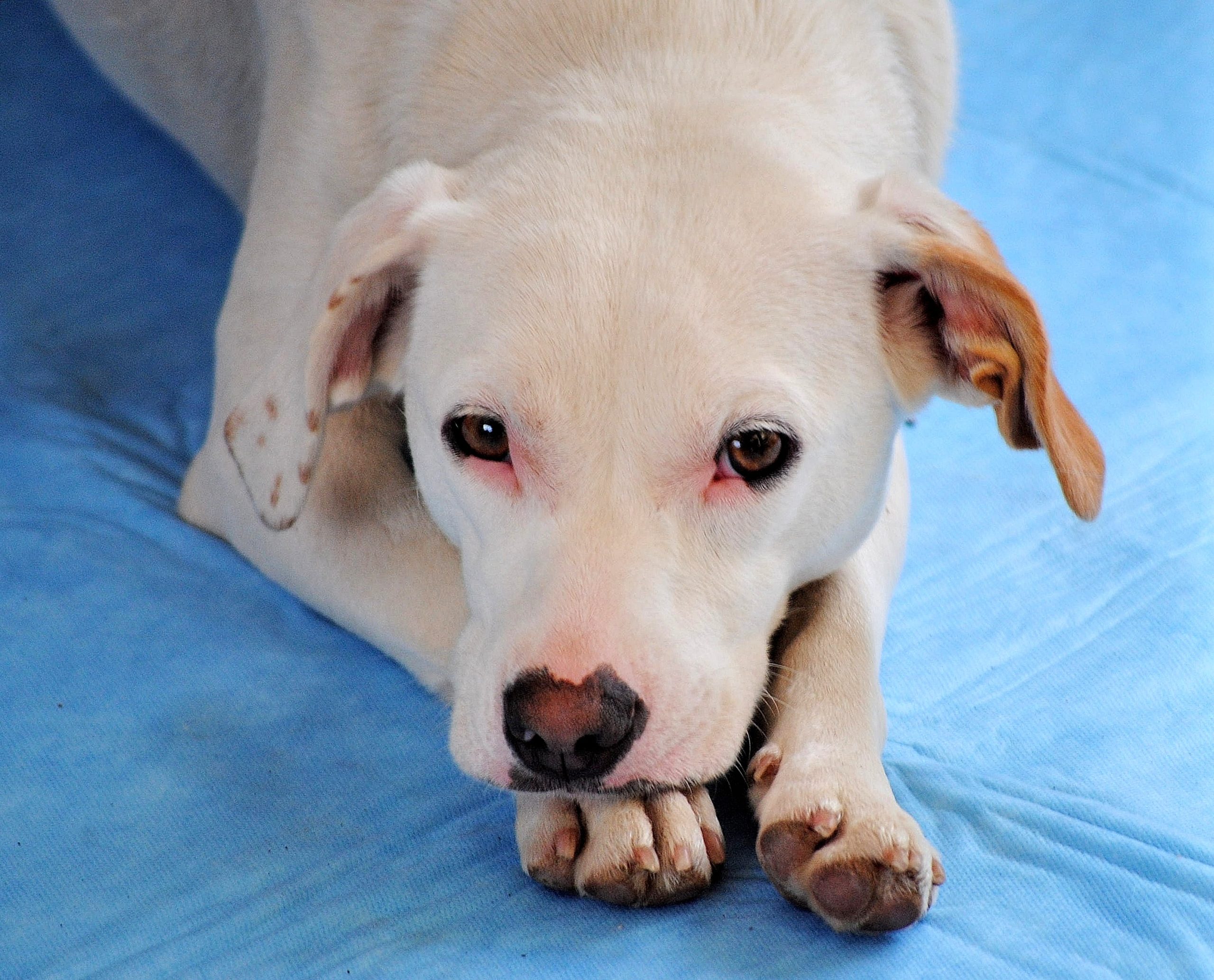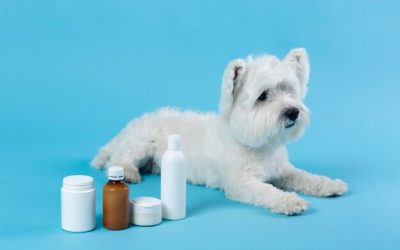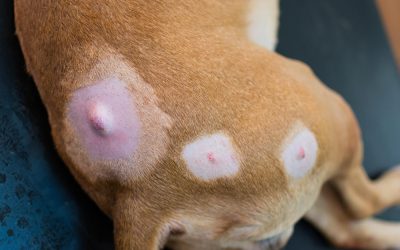How to Treat Hot Spots On Dogs

If you’ve ever noticed a red, moist, irritated patch on your dog’s skin that seems to appear almost overnight, you’ve likely encountered a hot spot. These painful lesions can be distressing for both you and your furry friend, but the good news is that with proper treatment, most hot spots heal quickly and effectively.
Hot spots, technically called moist dermatitis, are most common in dogs with long or thick coats, such as Newfoundlands, German Shepherds, and Golden Retrievers. However, any dog can develop these uncomfortable skin conditions under the right circumstances.
Understanding how to properly treat hot spots and, more importantly, how to prevent them can save your dog from unnecessary discomfort and help you avoid costly emergency veterinary visits.
What Are Hot Spots and Why Do They Develop?
Hot spots get their name from the warmth generated by inflammation in the affected area. These sores are usually caused by self-trauma when a dog scratches an itchy spot so vigorously that he creates an open wound. What starts as a minor irritation can quickly spiral into a painful, infected lesion through a vicious cycle of scratching, licking, and further irritation.
The lick-itch-lick cycle is the fundamental problem with hot spots. When a dog licks the sore spot, it irritates superficial nerve endings in the skin, which stimulates more itching, followed by more licking, biting, and scratching. This self-perpetuating cycle can cause hot spots to dramatically increase in size in a very short period of time—sometimes expanding from a pinpoint area of redness to a large, painful lesion in just a matter of hours.
Common Causes of Hot Spots in Dogs
Understanding what triggers hot spots can help you prevent them from occurring in the first place. The most common causes include:
Allergies and Environmental Triggers
Food allergies, environmental allergens like pollen or dust mites, and flea allergies are frequent culprits. Any condition that makes your dog’s skin itchy can potentially lead to the excessive scratching that creates hot spots.
Moisture and Poor Air Circulation
Dogs with thick coats or those that spend time in humid environments are particularly susceptible. Moisture trapped against the skin creates an ideal environment for bacterial growth. This is why hot spots are more common during warm, humid weather.
Ear Infections
Many hot spots around the head and neck area are secondary to ear infections. Dogs scratch at their ears, creating trauma to the surrounding skin that can develop into hot spots.
Boredom and Stress
Some dogs develop hot spots due to excessive licking and chewing from anxiety, boredom, or stress. This behavioral component can make hot spots particularly challenging to treat if the underlying cause isn’t addressed.
Poor Grooming
Matted fur that traps moisture and debris against the skin can create conditions that favor hot spot development. Regular grooming is essential, especially for long-haired breeds.
Immediate Treatment Steps: What to Do When You Find a Hot Spot
When you discover a hot spot on your dog, quick action is essential to prevent it from worsening. Here’s what veterinary professionals recommend for immediate care:
Step 1: Stop the Self-Trauma
The first step in treating hot spots is to stop the self-mutilation. This might mean using an Elizabethan collar (cone), covering the area with a sock or light bandage, or using one of the soft “donut” collars if it keeps the area safe from your dog’s tongue.
Step 2: Clip the Surrounding Hair
Clipping the hair away from the hot spot and the surrounding area can be very helpful, especially if your dog has a thick coat. The hot spot will heal more quickly if the hair is removed so that the lesion can dry properly. Use dog hair clippers rather than scissors to avoid accidentally cutting your pet’s skin.
Step 3: Clean the Area Gently
Clean the skin with a mild, water-based antiseptic spray or wipe to remove bacteria and debris. Avoid harsh chemicals or alcohol-based products that can further irritate the skin. Veterinarians often recommend gentle cleansers like diluted chlorhexidine.
Step 4: Keep the Area Dry
After cleaning, gently pat the area dry and ensure it stays dry throughout the healing process. Moisture is the enemy of hot spot healing, so good air circulation is essential.
Professional Veterinary Treatment Options
While mild hot spots can sometimes be managed at home, many cases require professional veterinary care for optimal healing. Here’s what you can expect from veterinary treatment:
Thorough Cleaning and Assessment
The first step to professional treatment involves removing the grouping of bacteria from the skin surface by clipping the fur and thoroughly cleaning the area, usually with a chlorhexidine scrub. Your veterinarian will also assess the extent of the damage and determine if any underlying causes need to be addressed.
Topical Medications
Once the lesion has been clipped, your vet may recommend topical therapy using an antibiotic, drying, or steroid product. These medications help control bacterial infection, reduce inflammation, and promote healing.
Systemic Treatments
For more extensive hot spots or those that haven’t responded to topical treatment, systemic medications such as antibiotics, steroids, or other anti-inflammatory medications may be prescribed to reduce pain and inflammation from the inside out.
Addressing Underlying Causes
Professional treatment often involves identifying and treating the underlying cause of the hot spot. This might include treating ear infections, managing allergies, or addressing behavioral issues that contribute to excessive licking and scratching.
Prevention Strategies: Keeping Hot Spots at Bay
Prevention is always better than treatment when it comes to hot spots. Here are the most effective strategies for keeping your dog’s skin healthy:
Regular Grooming and Maintenance
Frequent grooming and ear cleaning may help prevent hot spots in your dog. Regular brushing prevents matting, removes debris, and allows you to spot potential problems early. Pay special attention to areas that tend to stay moist, such as under the ears, around the mouth, and in skin folds.
Environmental Control
Hot weather, especially humidity, can cause or complicate hot spots. Keep your dog cool and consider using a dehumidifier during particularly humid periods. Ensure your dog has access to cool, dry resting areas.
Allergy Management
If your dog has known allergies, work with your veterinarian to develop a comprehensive management plan. This might include special diets, antihistamines, or immunotherapy to reduce the underlying itchiness that can lead to hot spots.
Parasite Prevention
Maintain a consistent flea and tick prevention program, as these parasites are common triggers for the scratching that leads to hot spots.
Stress Reduction
Address anxiety and boredom through adequate exercise, mental stimulation, and consistent routines. Stressed dogs are more likely to engage in excessive licking and chewing behaviors.



